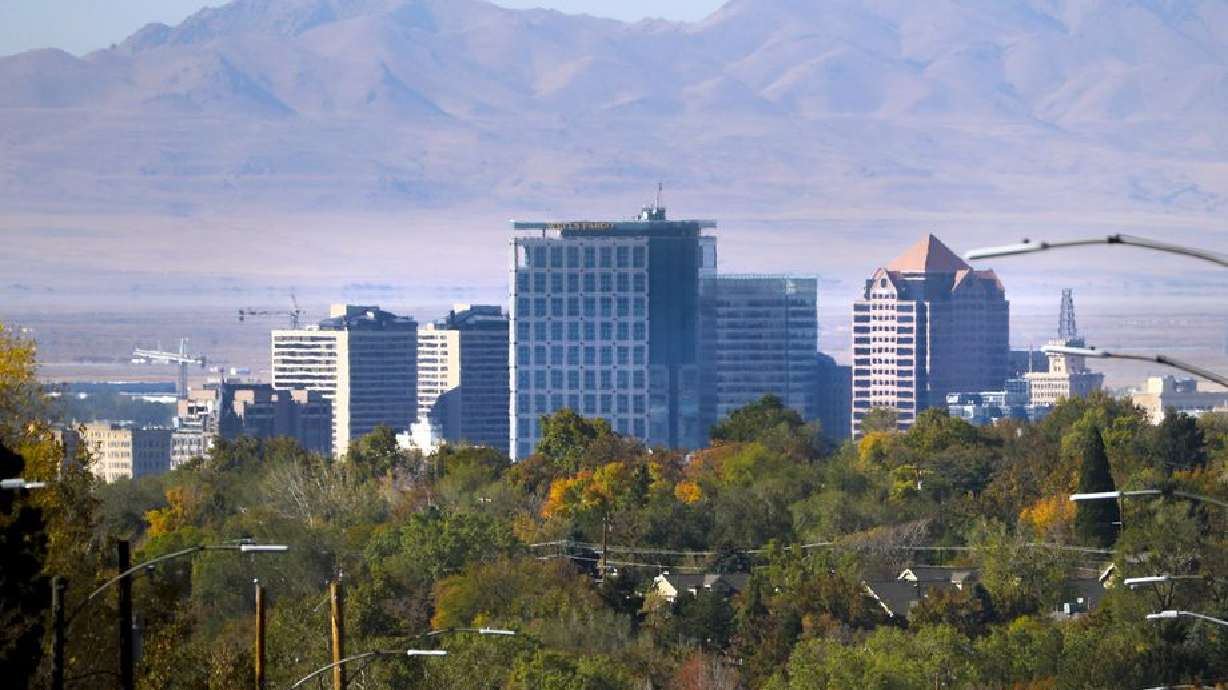Estimated read time: 2-3 minutes
This archived news story is available only for your personal, non-commercial use. Information in the story may be outdated or superseded by additional information. Reading or replaying the story in its archived form does not constitute a republication of the story.
SALT LAKE CITY — The shaking felt along the Wasatch Front late Tuesday morning was a result of aerial combat training, officials confirmed.
University of Utah Seismographic Stations said it received reports of shaking around 11:20 a.m. Several people on social media reported feeling a shaking, including residents in Salt Lake City, South Salt Lake and Herriman.
"We can confirm it was not an earthquake," the U. said on Twitter.
The university station said while it did pick up some shaking signals, "the signal we recorded is consistent with an atmospheric source, such as a sonic boom."
According to NASA, a sonic boom is "a thunder-like noise a person on the ground hears when an aircraft or other type of aerospace vehicle flies overhead faster than the speed of sound, or 'supersonic.'"
Sonic booms are created, according to NASA, when "air reacts like fluid to supersonic objects."
"As those objects travel through the air, molecules are pushed aside with great force and this forms a shock wave, much like a boat creates a wake in water," according to the space agency. "The bigger and heavier the aircraft, the more air it displaces. The sharp release of pressure, after the buildup by the shock wave, is heard as the sonic boom."
“We have received several reports of shaking this morning around ~11:20am.
— UUSS (@UUSSquake) October 27, 2020
We can confirm it was not an earthquake.
While we did pick up some shaking signals, the signal we recorded is consistent with an atmospheric source, such as a sonic boom.
The 388th Fighter Wing later confirmed that it was a sonic boom.
"The boom heard across the Wasatch Front at approximately 11:30 a.m. was likely the result of a sonic boom that happened during aerial combat training on the range," the U.S. Air Force unit posted on Twitter. "Pilots are authorized to fly at supersonic speeds in certain sections of the range's airspace and do so frequently,"
The boom heard across the Wasatch Front at approximately 11:30 a.m. was likely the result of a sonic boom that happened during aerial combat training on the range. Pilots are authorized to fly at supersonic speeds in certain sections of the range’s airspace and do so frequently. pic.twitter.com/7RhsQoO7MH
— 388th Fighter Wing (@388fw) October 27, 2020
According to NASA, there are several factors that can create or influence a sonic boom including weight, size, and shape of the aircraft or vehicle, plus its altitude, attitude, and flight path, and weather or atmospheric conditions.
The 388th Fighter Wing, stationed at Hill Air Force Base, explained that the sound from flying at supersonic speed is generally not heard but can be with different weather and atmospheric changes.











